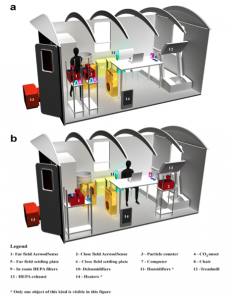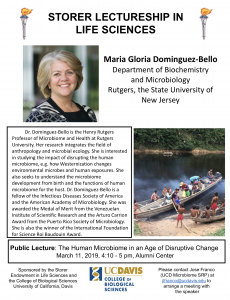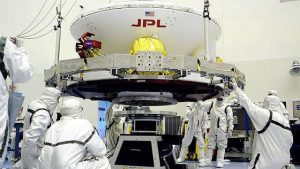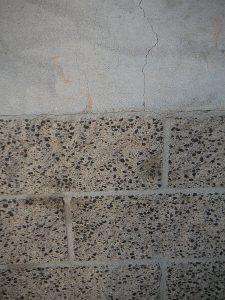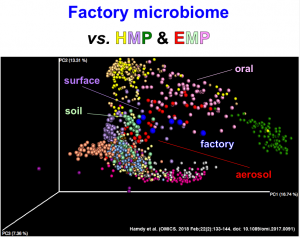New COVID Preprint out from BioBE: Preprint Link: https://www.researchsquare.com/article/rs-940891/v1 We recruited 11 participants that were diagnosed with COVID-19 and studied each for 3 days in a controlled chamber with multiple independent variables. We collected more than 2500 biological samples, particulates, and CO2 in near field (1.2 m) and far field (3.5 m) per each trial. Each …
A new viral disease surveillance tool: Indoor dust as a matrix for surveillance of COVID-19, published in mSystems. Throughout the COVID-19 pandemic, large scale monitoring of SARS-CoV-2 has helped to prevent spread and inform public health decisions. This has largely been done through individual sampling (ie nasal and saliva sample collection) and through environmental surveillance …
Skin-associated bacteria are abundant indoors. A comparison across studies shows that up to 30% of bacterial sequences detected indoors are associated with the human body (see Table 1 in this 2016 paper). I’ve been kind of skeptical that these sequences represented live organisms, however. Rather, I suspected the high proportion of sequences that were human-associated …
Maria Gloria Dominguez-Bello gave a talk at UC Davis on March 11, 2019. This talk was part of the Storer Lectureship in Life Sciences series. Her talk was on “The Human Microbiome in an Age of Disruptive Change” and it was really quite good. I live Tweeted the talk and if you are interested the …
One of the hurdles in linking microbial ecology with building science has been incorporating quantitative information about the microorganisms encountered in indoor environments, mainly because the standard high-throughput amplicon approach for community analysis is semi-quantitative, at best. Over the summer, there was a Twitter conversation related to this topic. My take-away from this (what I view …
Assistant Professor Position in Soil Microbiomics with a 75% research, 25% teaching appointment. The Department of Ecosystem Science and Management seeks candidates interested in conducting research to understand the distribution, composition, diversity, and functional impact of microbial communities in soil-plant habitats. We seek individuals with diverse interests in soil microbiomes and in teaching related courses. …
This is really fascinating: Source: Team discover how microbes survive clean rooms and contaminate spacecraft Hat tip to Elisabeth Bik for posting about this on Twitter So cool: microbes actually feed on the cleaning products. Also cool: undergraduates as authors. Team discover how microbes survive clean rooms and contaminate spacecraft https://t.co/ox4kMawHko — Elisabeth Bik (@MicrobiomDigest) June …
So I’d heard about “self-healing” concrete using chemicals that react with water to seal cracks, I’ve even blogged about self-healing concrete using bacteria embedded into the concrete (back in 2011). And then yesterday I came across research talking about using fungi for this purpose. Regardless of which method ends up working, I think these are …
The story behind: Toward the Drug Factory Microbiome: Microbial Community Variations in Antibiotic-Producing Clean Rooms (OMICS. 2018 Feb;22(2):133-144. doi: 10.1089/omi.2017.0091.) PMID: 28873001 [Preprint] It was in 2013, on my return to Cairo University after a couple of years as a visiting scientist at UCSD, that I met Amal for the first time. Amal was a fresh master’s …
I entered the world of 16S rRNA gene metabarcoding as a naïve PhD student around five years ago. Like many people, I had hoped that there would have been others before me that had beaten the path and could guide me through the many pitfalls of this experimental approach. How wrong I was! I became …
